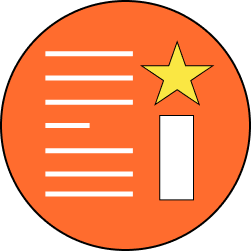10 Travel Tips for France: Make the Most of Your Trip
- Nanthiya Chaiyain

- May 17, 2024
- 4 min read
Updated: Jun 20

France is a dream destination. A country of timeless elegance, rich culture, world-class cuisine, and scenic diversity. From the romantic streets of Paris and the lavender fields of Provence to the alpine beauty of Chamonix and the golden coastline of the French Riviera, there's so much to see and experience.
But to fully enjoy your journey, it's helpful to know what to expect and how to navigate like a local. This comprehensive guide shares essential France travel tips to help you make the most of your trip.
1. Know the Basics Before You Go
Currency: Euro (€)
Language: French. While many people in tourism speak English, especially in major cities, learning a few French phrases goes a long way.
Time Zone: Central European Time (CET)
Credit Cards: Widely accepted, but it’s wise to carry some cash for small cafés, markets, or rural areas.
Plugs: Type C and E; 230V supply
2. Learn Basic French Phrases
Making an effort to speak French, even just a few words, is appreciated and can improve your interactions with locals. Try learning:
Bonjour (Hello, good day)
Merci (Thank you)
S’il vous plaît (Please)
Excusez-moi (Excuse me)
Parlez-vous anglais ? (Do you speak English?)
L’addition, s’il vous plaît (The bill, please)
3. When to Visit France
France is a year-round destination, but timing depends on your interests.
Spring (April to June): Mild weather, blooming gardens, fewer tourists.
Summer (July to August): High season; great for festivals and beach trips but expect crowds and higher prices.
Fall (September to October): Harvest season, pleasant temperatures, ideal for wine regions.
Winter (November to February): Best for skiing in the Alps or festive city breaks in Paris and Strasbourg.
4. Transportation Tips
Trains
France’s rail system is fast, efficient, and scenic. Use the TGV (high-speed train) for long distances and TER for regional routes.
Book in advance on SNCF Connect or Trainline to save money.
Rail passes like the Eurail France Pass can be good value if visiting multiple cities.
Public Transportation
In cities like Paris, Lyon, or Marseille, metros, trams, and buses are reliable and easy to use.
Purchase a multi-day travel card or Carnet of 10 metro tickets in Paris.
Validate your ticket before boarding trains or buses.
Driving in France
Ideal for exploring the countryside, wine regions, or small villages.
Roads are well-maintained, but tolls on highways can add up.
Drive on the right-hand side; parking in cities can be tricky, so consider park-and-ride lots.
5. Cultural Etiquette to Keep in Mind
Greet with “Bonjour” when entering a shop, café, or restaurant.
Don’t expect quick service — dining is a slow and social experience.
Tipping is not required, but rounding up or leaving 5-10% is appreciated for great service.
Dress well — casual chic is the norm. Avoid overly sporty outfits when not hiking or sightseeing.
Quiet tones are favored in public; avoid loud conversations.
6. Dining in France
What to Expect:
Meals are leisurely and meant to be savored.
Tap water is safe to drink; ask for "une carafe d’eau" (a pitcher of water).
Bread is usually served free, but butter may not be.
Dining hours can be limited — many restaurants close between lunch and dinner.
Must-Try Foods:
Croissants and pastries from a local boulangerie
Cheese and charcuterie platters
Coq au vin, duck confit, or boeuf bourguignon
Crêpes in Brittany, cassoulet in Toulouse, bouillabaisse in Marseille
Regional wines and French Champagne
7. Save on Costs Without Sacrificing Experience
Visit museums on the first Sunday of the month when many offer free entry.
Use local markets for fresh, affordable food and picnic supplies.
Consider a city pass (like the Paris Museum Pass) to save on attractions.
Eat a prix fixe lunch menu at restaurants — cheaper and just as delicious as dinner.
Travel by train instead of flights for shorter distances.
8. Safety & Practical Info
France is generally safe, but beware of pickpockets, especially in touristy areas
like metro stations or the Eiffel Tower.
Keep copies of your passport and travel insurance.
Emergency numbers: 112 (general), 15 (medical), 17 (police), 18 (fire)
9. Popular Places to Visit
Paris
The iconic capital with art, fashion, gastronomy, and romance. Don’t miss:
Eiffel Tower
Louvre Museum
Montmartre & Sacré-Cœur
Seine River Cruise
Notre-Dame & Sainte-Chapelle
Provence
Famous for lavender fields, medieval towns, and local rosé wines.
French Riviera (Côte d’Azur)
Sunny beaches and glamor in Nice, Cannes, and Monaco.
Loire Valley
Château-hopping in France’s “Garden of Kings.”
Normandy
D-Day beaches, Mont-Saint-Michel, and apple cider routes.
French Alps
For skiing, hiking, and alpine beauty in Chamonix, Annecy, and Grenoble.
Alsace
Fairytale villages, half-timbered houses, and excellent white wine.
10. What to Pack for France
Comfortable walking shoes (you’ll be walking a lot)
Weather-appropriate layers (especially in spring/fall)
Reusable water bottle
Small daypack for day trips
European plug adapter
A scarf or stylish jacket — it helps you blend in fashionably
Final Thought: France Is More Than Just a Destination
France invites you to slow down, savor the flavors, and soak in the details. It's a place where every corner café could become your favorite memory, and every quiet village or grand boulevard tells a story.
Let your trip be filled with art, taste, culture, and curiosity — and you’ll return with much more than photos.




Comments